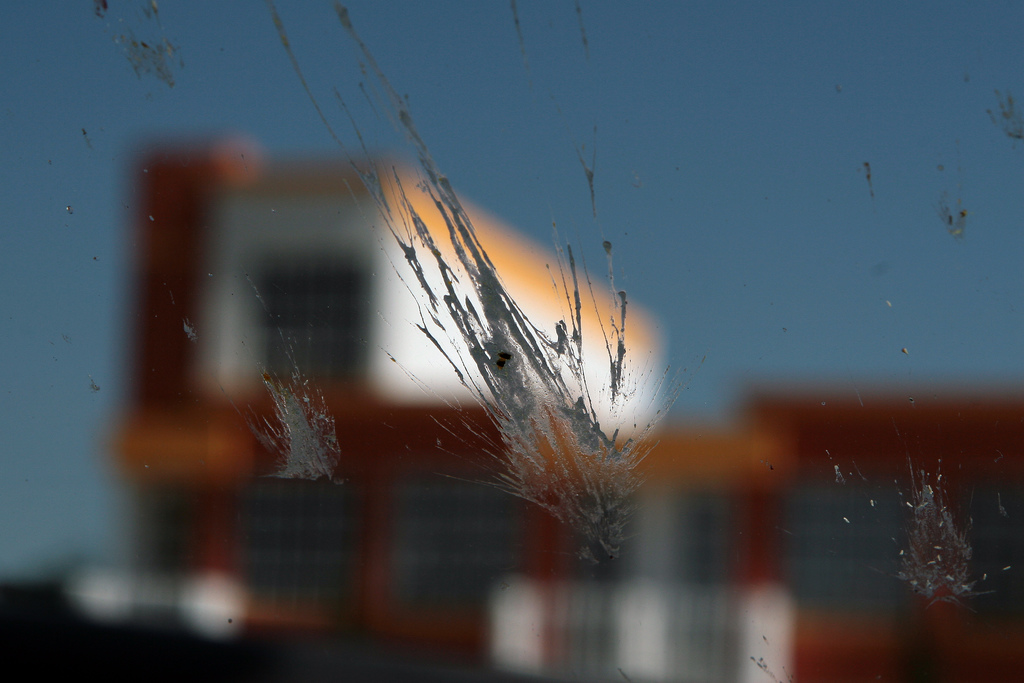 Every science journalist has a mixed portfolio. Some stories go viral. Others feel as if they’re read by five people including your parents. Our pieces also have a spectrum of meaningfulness. I’ve published articles to pay the bills that I hardly remember writing — I stumble across them sometimes, years later, and am shocked to see my byline — and I’ve written stories I will never forget. Maybe the reporting blew open my mind, wasn’t what I expected. Maybe what I discovered inspired me to see the world differently. Maybe it was just plain fun.
Every science journalist has a mixed portfolio. Some stories go viral. Others feel as if they’re read by five people including your parents. Our pieces also have a spectrum of meaningfulness. I’ve published articles to pay the bills that I hardly remember writing — I stumble across them sometimes, years later, and am shocked to see my byline — and I’ve written stories I will never forget. Maybe the reporting blew open my mind, wasn’t what I expected. Maybe what I discovered inspired me to see the world differently. Maybe it was just plain fun.
Sometimes, the axes of visibility and meaning intersect in a sad way. The stories my robot self wrote end up #3 on Reddit, while the ones I pour my heart into get ignored. I mourn these forgotten stories. I feel like I’ve created new life, and when I finally get to release my precious being into the wild, instead of flapping its wings and soaring it flails and crashes headfirst into my car windshield.
This post is a eulogy for these stories. Many of us have them. I know because I’ve reached out to a handful of science writers and they’ve told me, oh yes, we mourn these stories, too.
What determines the fate of our creations? Popularity is not a reflection of value; we all know that because Fox News. Some journalists I’ve talked to swear that a headline can make or break a piece, and I think there’s a lot to that. Certain stories strike a cultural nerve or scratch a public itch that no other story has yet done. Sometimes the forces at play seem downright mystical. “Maybe there’s just some alchemy that sets certain stories at certain times afire,” says science writer David Dobbs.
The monsoon of political news that now bombards everyone could also play a role; readers may not have as much of an appetite for science stories as they used to. “Anything that isn’t politics, or the reaction to politics, really struggles to break through,” says journalist Maryn McKenna. “It’s as though people only have so much attention to spare.” Sometimes they have room for light, fun science stories but not the more serious ones. “I’ve had stories about lichen and hippo poop go viral, while stories about allegedly hot topics sink without a trace,” The Atlantic staff writer Ed Yong says.
One of my sinkers was an essay I wrote for Aeon last year. It’s about Alzheimer’s disease, except not really. My editor asked me to dig into the science linking microbes to the illness — a controversial theory that has, in recent years, gained traction — and the hole I dug wound up the size of a meteor crater. To explore the science on this issue was to explore the hurdles researchers face when they push against established ideas, the ways in which assumptions and bias distort the truth, and the limitations of the scientific method. It was fun, it was fascinating, and I think it was important, yet its guts lie splattered all over my Volvo. (Or at least, that’s how it feels — I’m not actually sure how many eyes the story got, but it didn’t seem to do particularly well.)
I asked a few other writers to share their favorite lost gems, too. In 2017, David Dobbs spent six months working on this magnificent 12,000-word opus for Pacific Standard that he says only got modest attention. Dobbs explored how culture shapes madness through the story of Nev Jones, a woman who suffered a psychotic break while pursuing a philosophy doctorate and was then alienated by her friends and colleagues. “When I met Jones in early 2015, I quickly realized that hers was one of the most compelling and amazing stories I’d ever come across,” Dobbs says. “I felt — still feel — it was perhaps the most important story I’d ever written.”
Maryn McKenna pointed me to this beautiful feature for Eater that tells the story of a Georgia farm raising Iberian pigs. It didn’t fare as well as she’d hoped. “This story was a labor of love — I had known this farm and farm family for a few years, and felt they ought to be much better known; they are the real deal, a close-knit group of kind, creative, thoughtful people with close ties to a place and a history who ought to be called on by any journalist writing about organic agriculture and the food system, and yet somehow aren’t,” she told me. “When they happened to mention they would be importing the unique pigs that yield Iberian ham, this immediately felt to me like a rich, complicated story — about food, but also about adaptation, appropriation, what constitutes authenticity, and why in America we love foods of foreign countries but don’t particularly like the people that come from them.”
Ed Yong wishes his tribute to David Attenborough’s 90th birthday in May 2016 in The Atlantic had gotten more of an audience, and I do, too. “I came up with this ridiculous plan to watch every episode of his several classic ‘Life’ documentaries and then rank them all in the most absurd, Atlantic-y listicle of all time. I did it, I loved it, it nearly killed me, and not that many people read it because it’s ridiculous and, like, a billion words long,” he says. “But I still love it.”
LWON contributor Rebecca Boyle’s lovely story on light pollution, published in The Atlantic in 2016, also didn’t get as much attention as it should have. “I was really proud of how this turned out, from the reporting and quotes down to the last graf, which I’m probably overly fond of — partly because I set it in Colorado, where I’m from,” she says. “I also think this is a really important issue, and one I’m continuing to cover.” There’s also LWON writer Emma Marris’s haunting piece for National Geographic about a Peruvian man who turned into a jaguar. “It was just a gemlike tale that I was lucky enough to find in the world. I have always wished that it had found a wider audience,” she says.
Sally Adee, Cameron Walker and Helen Fields, all of whom also write for LWON, have pieces like this, too. Adee’s New Scientist story about a blood test that can detect the propensity for suicide “was so intriguing and fraught with potential consequences,” she says. Fields wrote a story she loved for Smithsonian about meteorites that disappeared in part because it was only published in print. “That’s probably my last piece of writing that wasn’t put online,” she says. And Walker wrote an inspirational profile of a Buddhist monk that appeared in the University of Washington Alumni Magazine. “The monks were so fascinating and I could really feel their deep goodness, which didn’t seem saccharine or unreachable,” she says. “I still think about some of the things we talked about that weekend.”
I think about my lost stories a lot, too. They may not have lived the life they deserved, but no: They will never really be forgotten. Rest in peace.
____
I’m a science writer based in New York’s Hudson Valley. I’m a contributing editor at Scientific American and a visiting scholar at NYU’s Arthur L. Carter Journalism Institute. I think a lot about how we derive truth from science and how study design, bias, emotion and experience shape our interpretation of science. Over the past two years, my work has won several national awards. A story I wrote for Scientific American was also nominated for a 2017 National Magazine Award.
I have a master’s degree in Science, Health & Environmental Reporting from NYU and a background in molecular biology.
Here’s my website and here I am on Twitter.
______
Photo: by Pulpolux !!!, via Flickr, Creative Commons

Thanks for linking to those stories, I enjoyed them very much.
Every one of these stories just earned at least another reader today. 🙂
What a kind thing to say, Rodrigo.